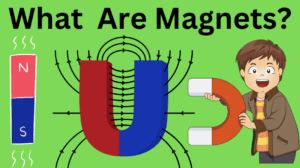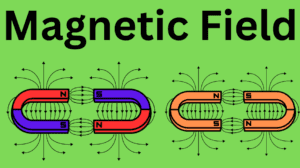Magnets have the mysterious ability to attract and repel objects without any visible physical contact. Due to this ability, magnets have fascinated human beings for centuries. Magnets are playing a vital role in our daily lives and various industries. It’s because we are using magnets in the simplest refrigerators and complex technological MRI machines. People are intrigued to know how do magnets work. Here, we will explore the fascinating world of magnets. We will also discuss the principles behind their functioning. At last, we will discuss numerous applications of magnets in our daily lives.
What Are Magnets?
We start our discussion simply by defining magnets. An object or a material that has the ability to produce magnetic field is a magnet. The magnetic field is an invisible force field that can exert force on other magnetic materials. The phenomenon of magnetism arises from the movement of charged particles. In these charged particles, there comes electrons within the atoms of certain materials. We can also call these materials ferromagnetic materials. In these materials, there comes iron, nickel and cobalt etc.

Magnetic Fields and Their Properties
1. What is Magnetic Field?
A magnetic field is a region around a magnet. In this region, its influence on other magnetic materials can be detected. If you want to check this influence, you should place a magnetic material within the field. This magnetic material will show its interaction with the magnet.

2. Magnetic Poles and Their Interaction
Every magnet has two distinct poles. These two distinct poles are the north pole and the south pole. Here, we should know that poles repel each other. It means that if we bring the south pole of a magnet close to another magnet’s south pole, they will definitely repel each other. Similarly, if we bring the north pole of a magnet close to the north pole of another magnet, they will also repel each other. Conversely, we should also know that opposite poles attract each other. It means that if we bring the north pole of a magnet close to the south pole of another magnet, they will attract each other. This fundamental principle governs the behavior of magnets. Moreover, it plays a crucial role in various applications.
The Fundamental Principles of Magnetism
1. Electron Spinning and Magnetic Dipole
The electrons exhibit a specific property at the atomic level. We call it spin. This property is similar to the rotation of a tiny compass needle. This electron spin gives rise to a tiny magnetic field. As a result, it forms the basis of magnetism in materials.

2. Alignment of Magnetic Domains
Magnetic domains are the regions within a material with aligned atomic domains. In the absence of an external magnetic field, these magnetic domains have random directions. As a result, they cancel out the magnetic effects of each other. However, when we apply a strong external magnetic field, these magnetic domains align in the directions of the magnetic field. As a result, they create a net magnetic effect.
Relevant Post: Why Do We See Different Colors?
3. Ferromagnetism, Para-magnetism, and Diamagnetism
Different materials exhibit varying degrees of magnetism. For example, ferromagnetic materials like iron have strong interactions between their magnetic domains. Due to this property, they show a strong attraction to the magnetic fields. The paramagnetic materials show weak attraction to magnetic fields due to weak attraction between their magnetic domains. On the other hand, the magnetic fields slightly repel the diamagnetic materials.
How Do Magnets Attract and Repel?
Magnetic Forces at Work
When two magnets come close to each other, their magnetic fields show interaction. This interaction leads to attractive or repulsive forces depending on the orientation of their poles. It means that if we bring two similar poles close together, they repel each other. On the other hand, opposite poles will attract each other. The strength of this force also depends upon the distance between them. If we place two magnets close enough, they have stronger magnetic force. Magnetic forces provide us useful information about how do magnets work.
The Role of Magnetic Domains
The overall magnetic force of a magnet depends upon the alignment of magnetic domains in the magnet. If we want to design and optimize magnet-based applications, we have to understand this phenomenon. Its reason is that it plays a crucial role in designing and optimizing magnet-based applications.
Permanent Magnets and Electromagnets
Both permanent magnets and electromagnets show magnetic properties. Anyhow, permanent magnets can retain their magnetism without an external power source. On the other hand, electromagnets require electric current to generate a magnetic field. Both types have specific uses in different industries.

Applications of Magnets in Everyday Life
1. Electric Motors and Generators
In electric motors, we have to convert electrical energy into mechanical energy. They are powering a wide range of devices from household appliances to industrial machinery. For this reason, we use magnets in the motors. Conversely, a generator works on the opposite principle. It converts mechanical energy into electrical energy. For this kind of energy conversion, we are also using magnets in generators.
2. Magnetic Storage Devices
We use hard drives and magnetic tapes to store digital information. They rely on magnetized particles for magnetic storage. This technology has been vital in the development of data storage solutions.
3. Magnetic Separation
In some industries, we have to separate magnetic materials from non-magnetic materials. This process is called magnetic separation. We also employ the magnetic properties of certain materials for magnetic separation in these industries.
Magnets in Science and Medicine
1. Magnetic Resonance Imaging (MRI)
MRI machines are aiding in medical diagnosis. To create detailed images of the internal structures of the human body, MRI machines use powerful magnets and radio waves.
2. Magnetic Therapy
Some alternative medical practices utilize magnets for therapeutic purposes, although the scientific evidence supporting their efficacy is still debated.
The History of Magnetism – How Do Magnets Work?
Early Discoveries and Compasses
The magnets have a very deep history. Its reason is that we have been using magnets for thousands of years. The ancient civilizations used lodestones for navigation. It is a naturally occurring magnetic material.
Understanding Magnetic Earth
The Earth itself behaves like a giant magnet. Its magnetic field is playing a crucial role in navigation. Moreover, it is also protecting the planet from solar radiation.
Fun with Magnets: Magnetic Toys and Experiments
Magnets have captured the imaginations of children and adults alike. We are using magnets to create various magnetic toys and to perform various educational experiments.
The Future of Magnetism and Technology
We are observing continuous advancements in technology. That’s why the potential applications of magnets are also constantly expanding. We are using magnets in renewable energy to space exploration. In short, they are playing a vital role in shaping the future of the world.
Conclusion
In conclusion, magnets have a remarkable natural phenomenon. They have widespread applications in science, technology and everyday life. If we want to harness their power for various purposes, we have to learn how do magnets work. We are seeing their applications from powering electric vehicles to aiding in medical diagnostics. The world of magnetism will keep surprising us with new possibilities. This is due to the continuous research and innovation in this field.
FAQs About How Do Magnets Work
1. Are all Materials Magnetic?
No, all the materials don’t show magnetic properties. Some specific materials like iron, nickel and cobalt show magnetic properties.
2. Can Magnets Lose Their Magnetism Over Time?
Yes, they can lose their magnetism over time. It is due to various reasons. Exposure to strong external magnetic fields and high temperatures are specific factors that can become the cause of losing magnetism over time.
3. Is It Safe to Have Magnets Near Electronic Devices?
If we bring small magnets close to the electronic devices, they will not last adverse impacts on their working. On the other hand, if we bring strong magnets close to the electronic devices, they may interfere with certain electronic components.
4. Can Magnets be Harmful to Humans?
No doubt, we are using magnets in everyday applications. The magnets used in these applications have no harmful impacts on human beings. There are some extremely powerful magnets. If we don’t handle these magnets with caution, they can pose some risks.
5. Can Magnets Generate Electricity?
Yes, magnets can generate electricity. That’s why we are using them in electric generators. To produce electricity in electric generators, we have to move them relative to conductive materials. This is all about how do magnets work.





